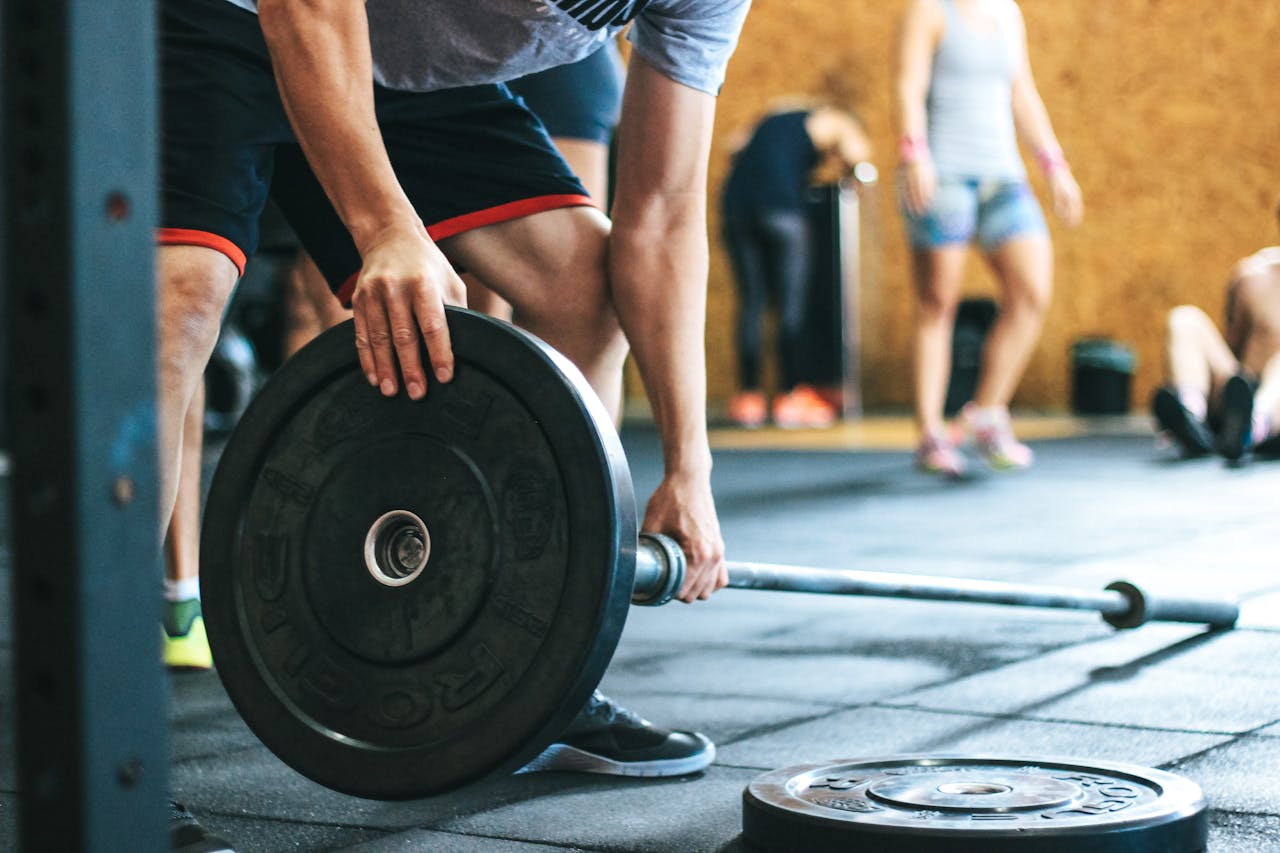When equipping your gym, selecting the right flooring is crucial for functionality, safety, and durability.
Rubber flooring and foam mats are two popular options, each with unique advantages and limitations.
Here’s how they compare:
Durability
- Rubber Flooring: Known for its exceptional durability, rubber flooring can withstand heavy equipment and high foot traffic without showing significant wear and tear. It is resistant to abrasions and dents, making it ideal for long-term use.
- Foam Mats: While foam mats offer cushioning, they are less durable than rubber. They can tear or compress over time, especially under heavy equipment or intense workouts.
Shock Absorption
- Rubber Flooring: Provides excellent shock absorption, protecting joints during high-impact activities like weightlifting or aerobics. It also reduces the impact on the subfloor.
- Foam Mats: Offers a softer surface, making it suitable for activities like yoga or stretching. However, it may not provide sufficient support for heavy equipment or high-intensity exercises.
Slip Resistance
- Rubber Flooring: Features superior non-slip properties, even when wet, reducing the risk of injuries.
- Foam Mats: Can become slippery when wet or worn, posing a potential safety hazard in sweaty or damp environments.
Cost
- Rubber Flooring: Typically more expensive upfront but offers better longevity, making it cost-effective over time.
- Foam Mats: Cheaper initially but may require frequent replacement due to wear and tear.
Applications
- Rubber Flooring: Ideal for weightlifting areas, cardio zones, and high-traffic spaces.
- Foam Mats: Better suited for low-impact activities and personal fitness spaces.
Choosing the Right Rubber Flooring Thickness for Your Needs
The thickness of your rubber flooring significantly affects its performance, durability, and safety.
Here’s how to choose the best thickness based on your gym’s specific requirements:
1. Thin Rubber Flooring (4–6 mm)
- Best for: Cardio areas or light activity zones.
- Advantages: Affordable and easy to install. Provides a basic level of protection for subfloors.
- Limitations: Not suitable for heavy equipment or high-impact activities as it offers minimal shock absorption.
2. Medium-Thickness Rubber Flooring (8–12 mm)
- Best for: Multi-purpose gyms with moderate equipment usage.
- Advantages: Provides adequate cushioning and durability for most gym activities.
- Limitations: Slightly more expensive than thinner options but balances cost and functionality.
3. Thick Rubber Flooring (15–20 mm or more)
- Best for: Weightlifting zones and commercial gyms.
- Advantages: Absorbs heavy impacts, protects subfloors, and reduces noise. Essential for areas with free weights or heavy machinery.
- Limitations: Higher cost and increased installation effort.
Pro Tip: For areas with extreme impact, such as Olympic lifting platforms, consider rubber flooring over 20 mm or additional subflooring layers for optimal protection.
EPDM vs. SBR Rubber: What’s the Difference and Which is Best?
Rubber flooring can be made from EPDM (Ethylene Propylene Diene Monomer) or SBR (Styrene-Butadiene Rubber). Understanding their differences will help you choose the right material for your application.
1. Material Composition
- EPDM Rubber: A synthetic rubber known for its flexibility and resistance to UV, ozone, and weather conditions.
- SBR Rubber: Derived from natural or synthetic sources, SBR is cost-effective and offers decent wear resistance but lacks some of the advanced properties of EPDM.
2. Durability
- EPDM Rubber: Highly durable and retains its properties even in harsh environments, making it suitable for both indoor and outdoor use.
- SBR Rubber: Durable but primarily recommended for indoor applications as it is prone to degradation from UV exposure.
3. Cost
- EPDM Rubber: Generally more expensive due to its superior performance and versatility.
- SBR Rubber: A budget-friendly option for gyms, especially for indoor settings.
4. Applications
- EPDM Rubber: Ideal for playgrounds, outdoor gyms, and areas exposed to sunlight or moisture.
- SBR Rubber: Commonly used in indoor gym flooring, weight rooms, and areas with high foot traffic.
5. Environmental Considerations
- EPDM Rubber: Often made with eco-friendly components, making it a more sustainable choice.
- SBR Rubber: Frequently produced from recycled materials, contributing to reduced waste but may lack some eco-certifications.
Final Recommendations
- Rubber Flooring vs. Foam Mats: Choose rubber for durability and heavy use; opt for foam for light, low-impact activities.
- Thickness Selection: Match the thickness to your gym’s activity levels and equipment to ensure adequate protection and longevity.
- EPDM vs. SBR: Use EPDM for outdoor and high-stress environments; rely on SBR for cost-effective indoor solutions.
Transform your space with top-quality rubber flooring solutions from ACCT GLOBAL! Whether it’s for gyms, playgrounds, or industrial use, we’ve got you covered. Contact us today for expert advice and premium products in Malaysia. Let’s build something durable and safe together—reach out now!


Leave a Reply